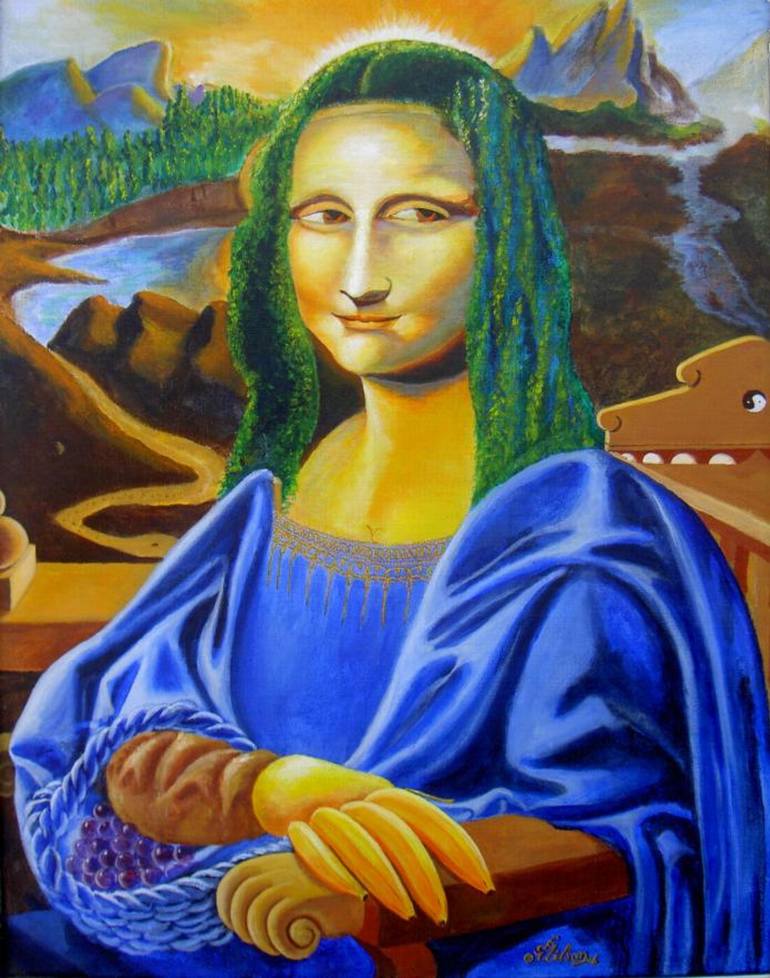


634 Views
1
View In My Room
Painting, Acrylic on Other
Size: 36 W x 48 H x 2.5 D cm
634 Views
1
ABOUT THE ARTWORK
DETAILS AND DIMENSIONS
SHIPPING AND RETURNS
Description: In his writings, Leonardo da Vinci suggested that the artist could enhance his creative faculties by staring at a stain on the wall and perceiving therein whatever he wished to see. Having read that in 1980, I embarked on a quest to find whether there were images hidden in the Mona Lisa...
Year Created:
2006
Subject:
Styles:
Mediums:
Painting, Acrylic on Other
Rarity:
One-of-a-kind Artwork
Size:
36 W x 48 H x 2.5 D cm
Ready to Hang:
No
Frame:
Not Framed
Authenticity:
Certificate is Included
Packaging:
Ships in a Box
Outdoor Safe:
No
Delivery Cost:
Shipping is included in price.
Delivery Time:
Typically 5-7 business days for domestic shipments, 10-14 business days for international shipments.
Returns:
14-day return policy. Visit our help section for more information.
Need more information?
Need more information?
David G Wilson
United States
My name is David G. Wilson. I was born in 1953 in the English and French Creole speaking Caribbean Island, The Commonwealth of Dominica. I have been painting for over forty-five (45) years. However, my artistic inclination has been lifelong. I immigrated to the United States in 1976 where I obtained a bachelor's degree in Economics with a minor in foreign languages (French & Spanish). I am a self-taught artist whose interest in painting intensified on my arrival in the United States. By visiting the numerous museums at my disposal in the USA, I have been able to learn more about Art and Art History than if I had attended art school. I live in New York City with my wife of thirty-eight (38) years, Yvonne. ANTHROPOMORPHIC PERCEPTION. I paint in a style that I call "Anthropomorphic Perception." It reflects "An exercise in Ultra-Perceptive Plausible Juxtaposition." Anthropomorphic Perception demonstrates my cultivated ability to perceive hitherto unseen alternative realities within any image that I behold. The "mnemonic" objects and images that I perceive therein are reminiscent of the trinkets with which my African ancestors were equated. By strategically juxtaposing inanimate objects to create human form I try to graphically approximate the cruel and reductive equation to which slavery devalued the image of my African ancestors and it serves to illustrate the degree of dehumanization to which my ancestors were subjected. By strategically juxtaposing commonplace anthropomorphic still-life objects that collectively create a human form, I can portray the obvious humanity that the slave-master refused to acknowledge, but instead chose to see my ancestors as merchandise to be bought and sold at the auction. From childhood, my exposure to images of European art has left me with an unapologetic predilection for Western aesthetics. In short, I love European Old-master paintings and have had a life-long infatuation with the work of Leonardo da Vinci. In 1980, shortly after discovering the works of Salvador Dal, and by extension that of Guiseppi Arcimboldo, I read a quote from Leonardo,the artist who wishes to enhance his faculties for creative invention can stare at a stain on the wall and perceive therein, whatever he wishes to see. I was instantly taken back to my childhood when my mother was teaching my late brother, Eddie, and me to read.
Why Saatchi Art?
Thousands of
5-Star Reviews
We deliver world-class customer service to all of our art buyers.
Global Selection of Original Art
Explore an unparalleled artwork selection from around the world.
Satisfaction Guaranteed
Our 14-day satisfaction guarantee allows you to buy with confidence.
Support Emerging Artists
We pay our artists more on every sale than other galleries.
